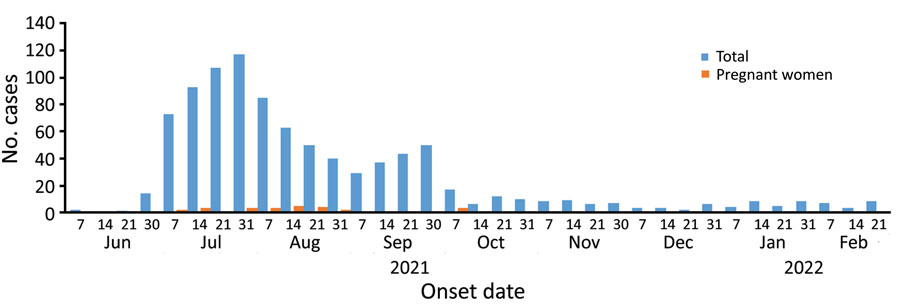Volume 28, Number 8—August 2022
Research Letter
Hepatitis E Virus Outbreak among Tigray War Refugees from Ethiopia, Sudan
Figure

Figure. Number of cases of HEV infections per week among Tigray War refugees from Ethiopia in Sudan, June 2, 2021–February 21, 2022. HEV infections occurred in 3 humanitarian camps for refugees in Gedaref State, Sudan. The HEV outbreak peaked in July 2021 during which 395 cases were reported. HEV, hepatitis E virus.
Page created: June 22, 2022
Page updated: July 21, 2022
Page reviewed: July 21, 2022
The conclusions, findings, and opinions expressed by authors contributing to this journal do not necessarily reflect the official position of the U.S. Department of Health and Human Services, the Public Health Service, the Centers for Disease Control and Prevention, or the authors' affiliated institutions. Use of trade names is for identification only and does not imply endorsement by any of the groups named above.